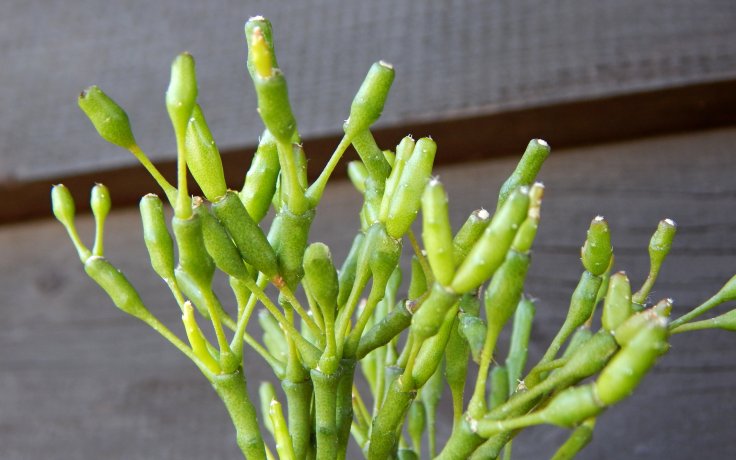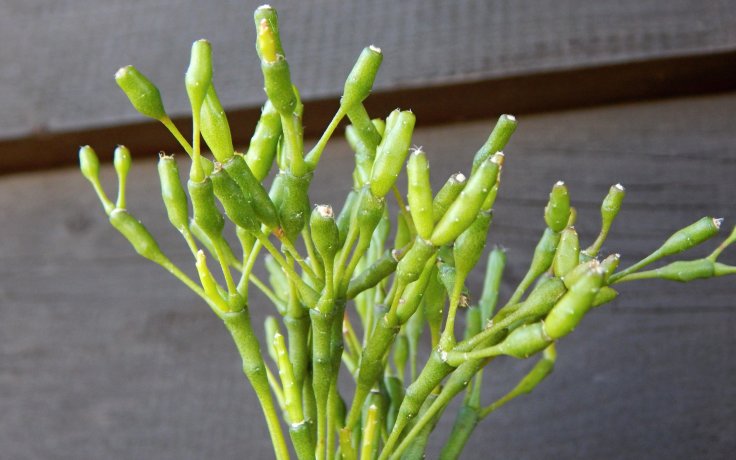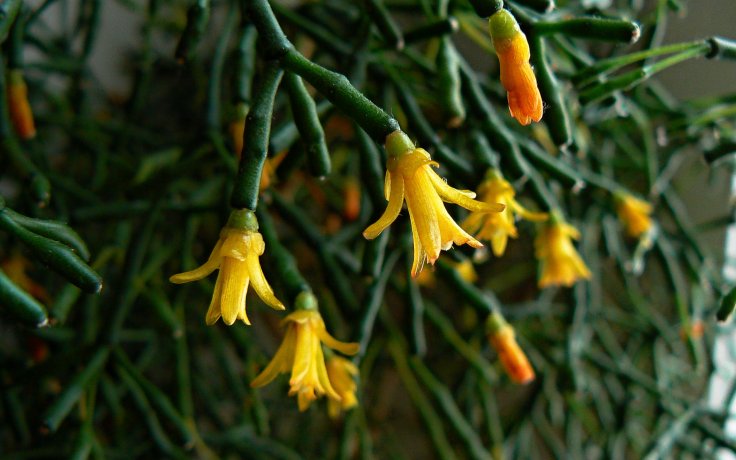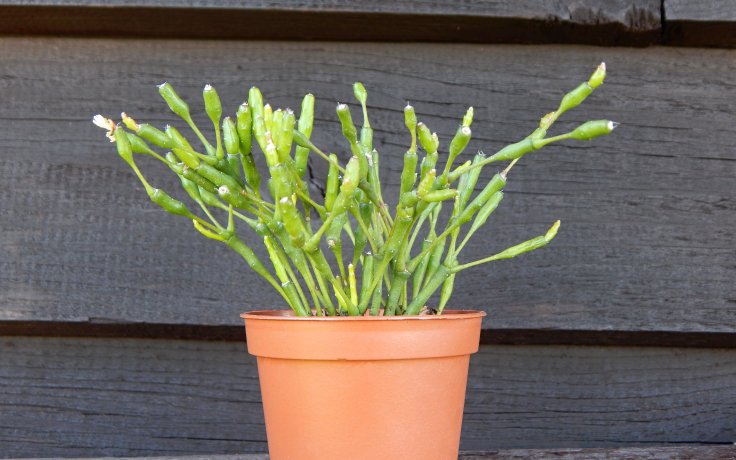




Hatiora salicornioides
Ideally place the plant in partial shade. The plant should be placed ideally in a shady or sunny location.
Always water a few days after the substrate has dried out. In winter, limit watering.
It can tolerate -1.1 °C in the short term. However, the plant is not hardy.
During early spring the plant is literally covered with many yellow flowers. In addition, the shape of the stems resembles bones.
Hatiora salicornioides, formerly known as Rhipsalis salicornioides, has earned the nickname Dancing Bones for its delicate and aesthetic stems that undulate and arch in space.
This cactus is native to the tropical rainforests of southeastern Brazil, in the state of Parana, along the border with Paraguay. Here it grows mainly on tree trunks, but also on rocky soil. Its bushy stems consist of characteristic segments that resemble sticks, bones or bottles. The light and dark green segments grow up to 3 cm long and form an elegant contrast to the sturdy, slightly arching stems of older plants, which can reach heights of up to 60 cm.
During late winter or early spring, Hatiora is enveloped in a veil of enchanting flowers. Orange-yellow bell-shaped flowers up to 2 cm long bloom at the ends of the younger segments. The inflorescence gives the plant an even more attractive appearance, as the delicate florets can be found on the plant in abundance.
Hatiora salicornioides is also ideal for beginners. It thrives in a bright habitat without direct sunlight, but can also tolerate poor light conditions. You can also grow it in hanging containers. This cactus will bring a touch of exotic elegance to your home and become an original accessory that is guaranteed to attract attention, especially when it is in bloom.